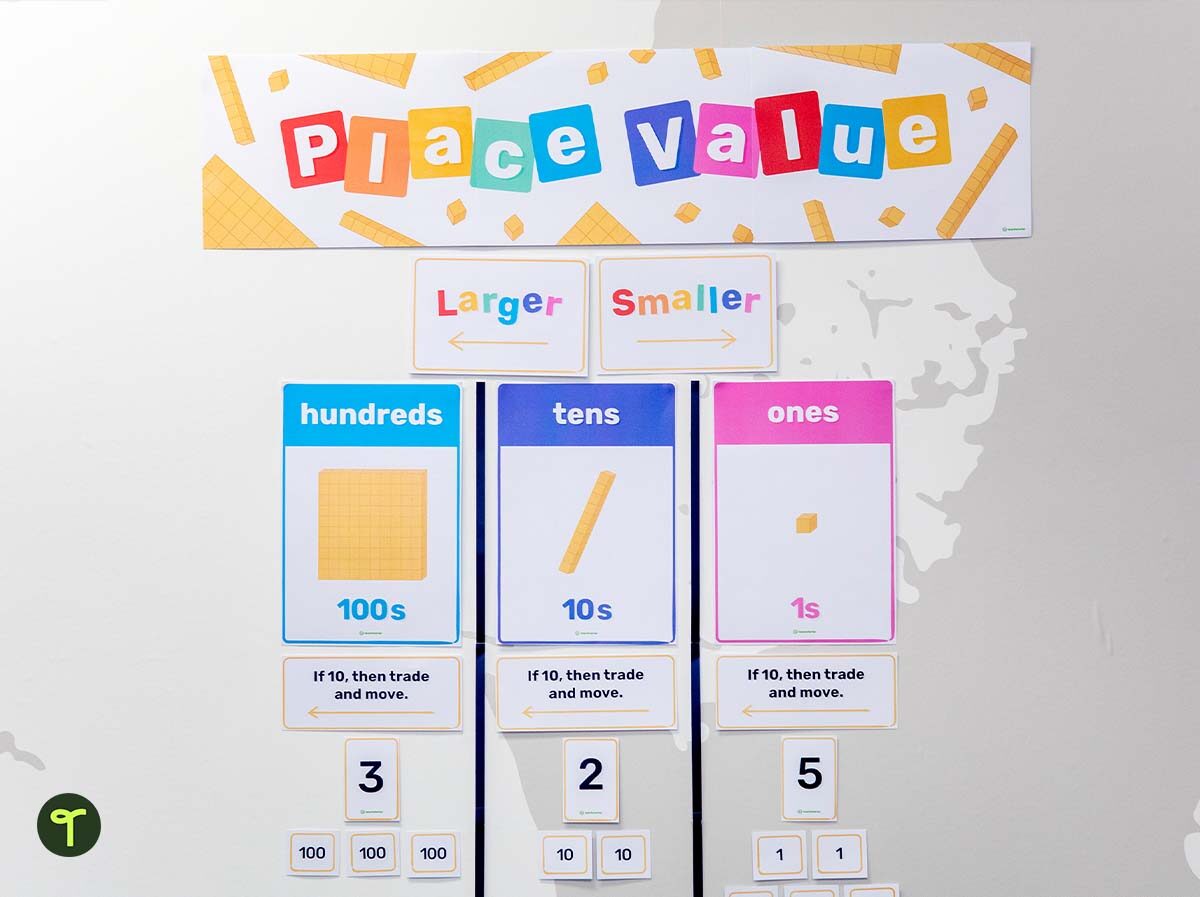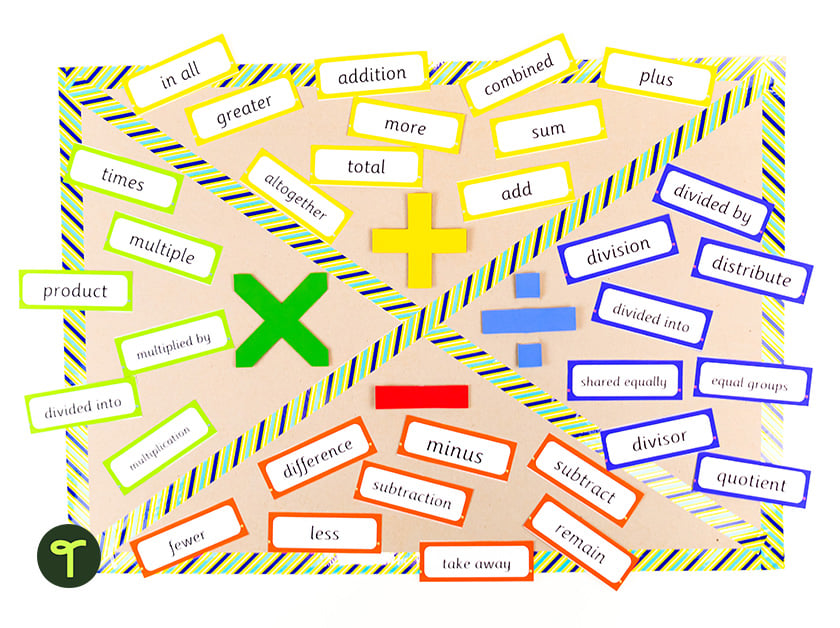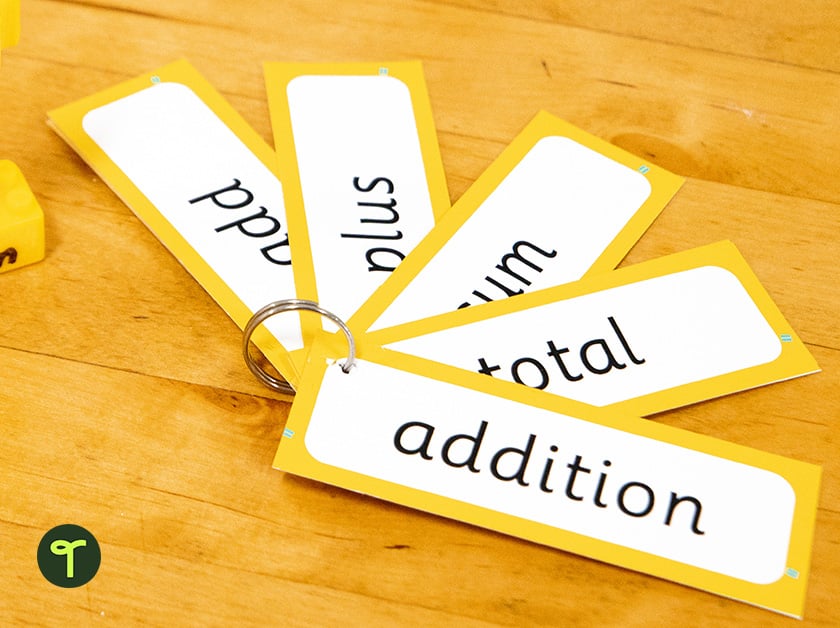Math and vocabulary words may not seem like they go together in the same sentence for some people. But if you’re teaching math, that means you need to be teaching your students math vocabulary words too.
Why Is Vocabulary Important in Math?
The word “vocabulary” may call to mind ELA, but math has a language of its own with unfamiliar terms that can trip students up. Think of math as a fast-paced sport (stay with us!).
Most sports include some unusual lingo — let’s use basketball as an example. The fast-paced nature of basketball can make learning the language of hoops even more of a challenge. If you’ve ever been assigned to coach basketball as an extracurricular sport, you’ll know that there’s little point in asking your students to fast break the ball down the court, post up, layup, or ally-oop unless there is a clear understanding of what these technical terms mean.
Get started with math vocabulary posters for your classroom!
With this analogy in mind, imagine being a student lost in a fast-paced math lesson, confused by the language and the terminology. Even with the best intentions, your confused student is soon going to feel overwhelmed, frustrated, and defeated.
So why is math vocabulary so important to teach? Understanding math vocabulary has a correlation to better problem-solving and conceptual understanding of math itself. After all, how can you supply an answer when you don’t know what the question is actually asking!
Also at issue? Math vocabulary is also loaded down with homophones that can easily confuse students who don’t know what they mean in the mathematical context. Just look at the word “mean!” For students, the vocabulary word can refer to a dictionary definition or meaning or it can refer to someone who isn’t be very nice. But when they pull out their math books, suddenly mean … well … means something very different! This is true of all learners, but it can present a special roadblock for English language learners.
A place value bulletin board like this one provides a visual reference for students to remember important math vocabulary.
Look around the classroom. Do you have students in your classroom who do not respond to questions in math class? Perhaps you can think of students who demonstrate knowledge and understanding of math concepts in class, but do not perform well on math tests? Or maybe, you have a student who performs exceptionally in non-verbal reasoning tests but does not show the same ability when solving word problems?
There are three main ways in which your students’ failure to understand math vocabulary may show itself:
- not responding to questions and seeming disengaged
- unable to complete tasks that are heavy on written instruction
- unable to apply knowledge and understanding in math tests
How to Teach Math Vocabulary
In order to set our students up for success, they need regular planned opportunities to read, unpack, and use math vocabulary. Here are some simple ideas to make math vocabulary stick.
Set Up a Math Vocabulary Bulletin Board
Math anchor charts and math bulletin boards dedicated to vocabulary are both a great start as visual reminders reinforce your math vocabulary lessons.
We used our editable math vocabulary word wall cards to create this eye-catching math bulletin board. Remember to refer to your board daily, discuss the vocabulary, and make it part of your daily routine to pick a word and explore it!
Support Your Students with Vocabulary Binder Rings
We used our Math – Classroom Theme Pack editable name tags to create these effective math vocabulary binder rings to help students make links between math vocabulary related to the four operations. You could create binder rings with math vocabulary words for each student if you’ve got extra time, or you can create just a few that hang from hooks in the room where they’re easy for students to access for reference.
Punch-Out Math Terminology
Are you looking for a way to support both kinesthetic and visual learners who need to understand math vocabulary to succeed?
Take away the fear of mathematical terminology by using fun hand gestures to represent the four operations. Using hand gestures is a great way to reinforce teaching and learning and to help make student thinking more visible. This kind of teaching and learning technique makes me smile on the inside.
One of the hardest things about solving word problems is unpacking the words and identifying the math operation(s) needed to find the solution. Students need practice at both reading and interpreting word problems and identifying the operation required. Worry about the actual answer later on!
How to use this technique:
- Introduce a hand gesture and sound effect for each of the four mathematical operations. Choose easy-to-remember actions and short, sharp sound effects.
- Familiarize your students with these gestures by using them during daily math lessons. Whenever you use the words “addition,” “subtraction,” “multiplication,” or “division,” encourage your students to make the hand gesture and sound effect.
- Provide your class with a selection of word problem task cards that involve the four operations.
- Ask your students to work with a partner, taking turns to read the word problem and identify the math operation needed to solve the problem.
- Encourage your students to make the gesture and sound effect as soon as they identify the operation needed to solve each word problem. Make it fast-paced and fun!
Explore these word problem task cards to support this activity!
[resource:4696645] [resource:4800595] [resource:4803293]
Create a Math Terminology Word Search
Why not give your students a brain break from numbers? You can create a custom math vocabulary word search by using our Create Your Own Word Search Widget.
How to do it:
- Select Widgets from the home menu.
- Find and select Create Your Own Word Search
- Add a title.
- Enter a list of words that you would like to appear in your word search.
- Select a board size and font.
- Choose “yes” or “no” to including diagonals.
If you are teaching and learning about vocabulary related to measurement, it’s your lucky day! There’s a list of 45 measurement words, ready to go! Just select the appropriate word list from the drop-down menu (Custom List), and you are good to go.
Explore thousands of engaging digital and printable math resources created by teachers for teachers!
Banner image via Shutterstock/Studio.G Photography










Comments